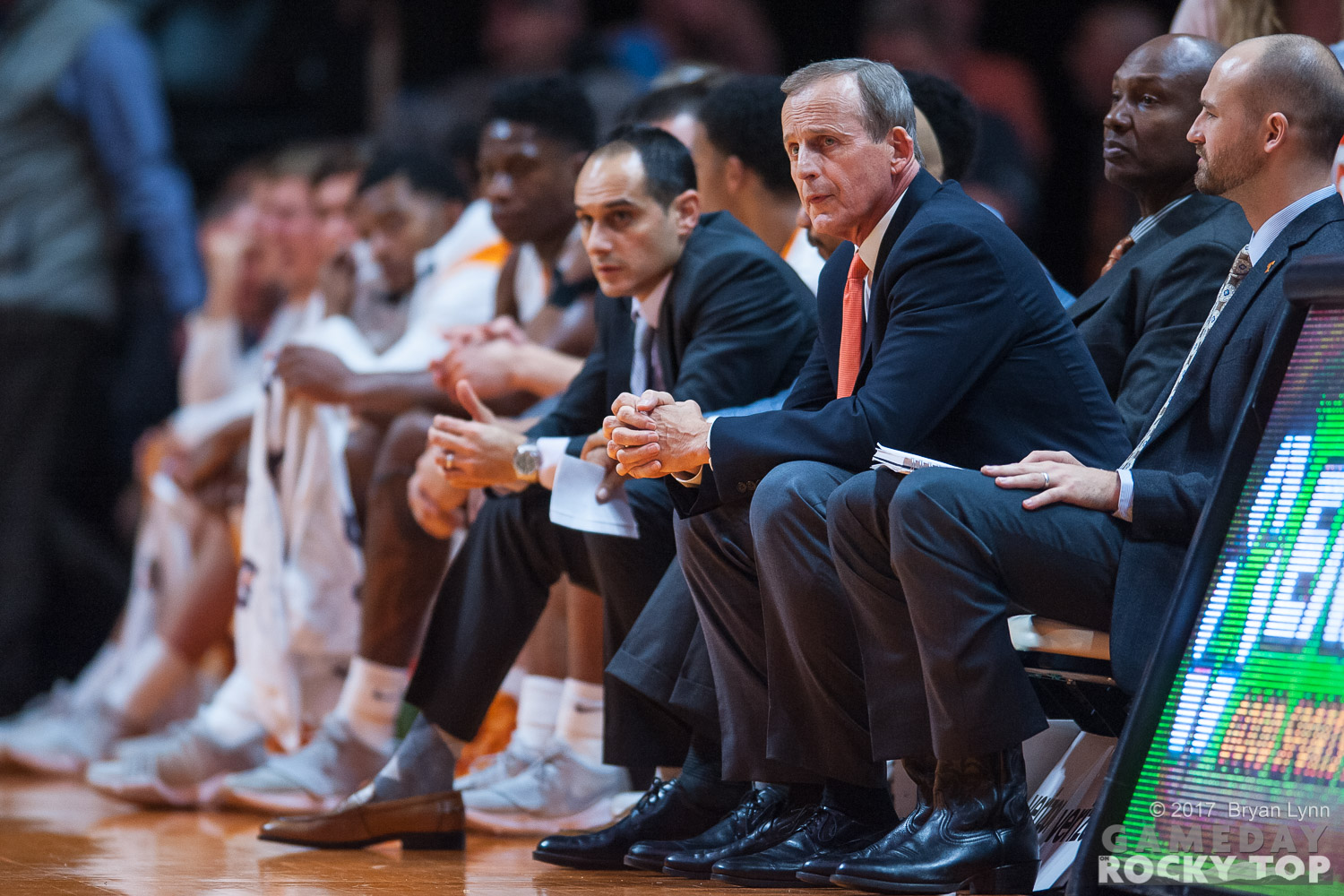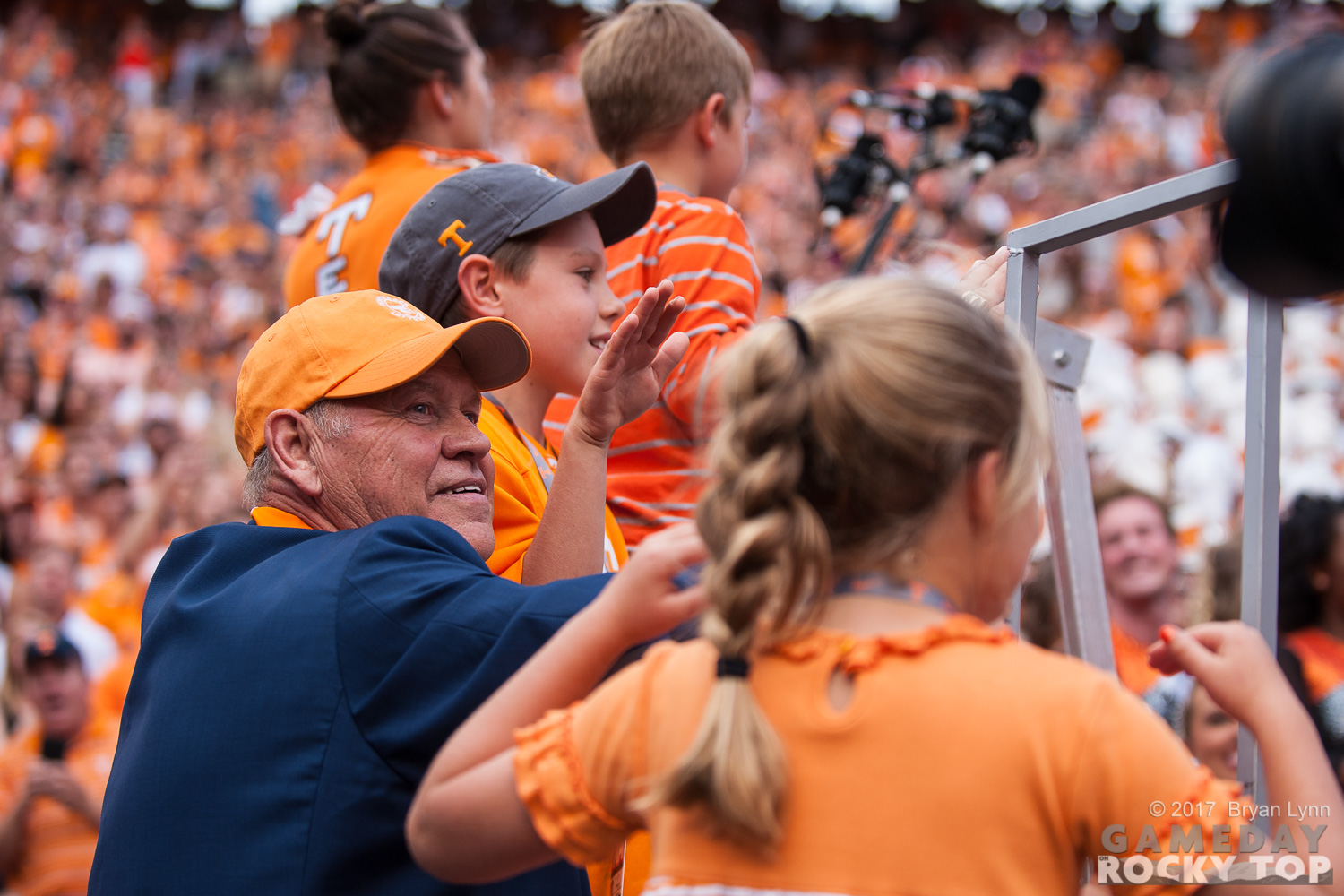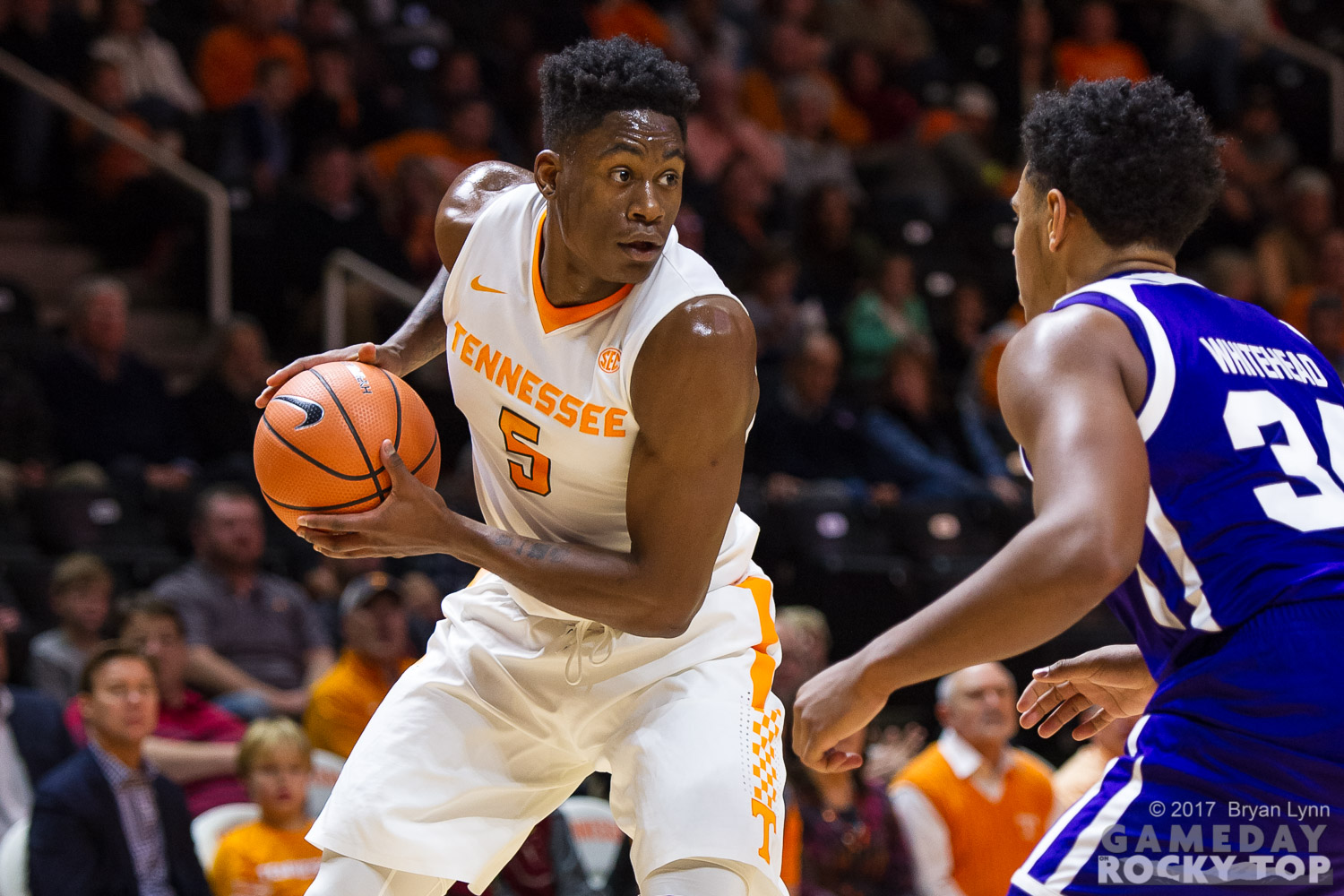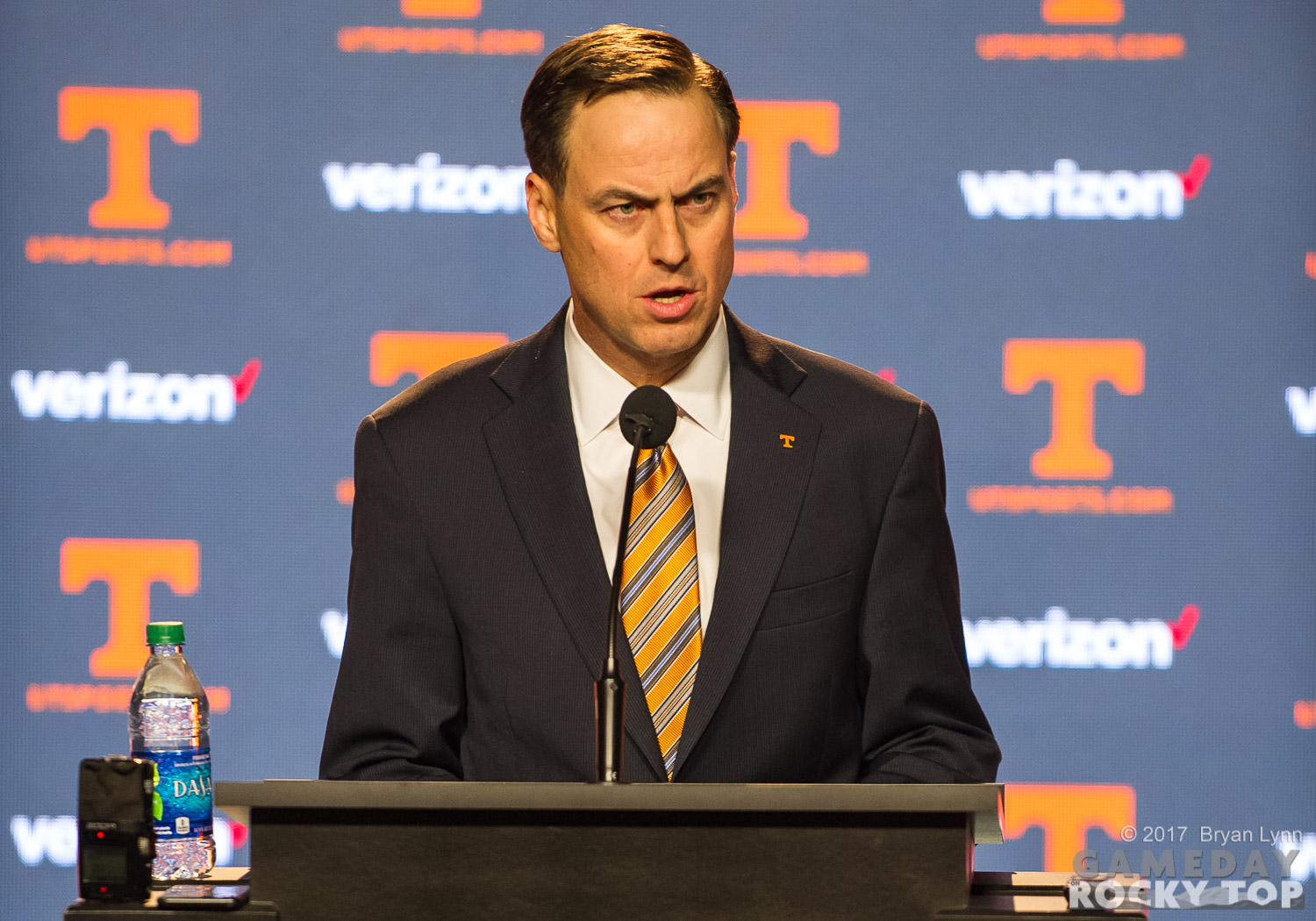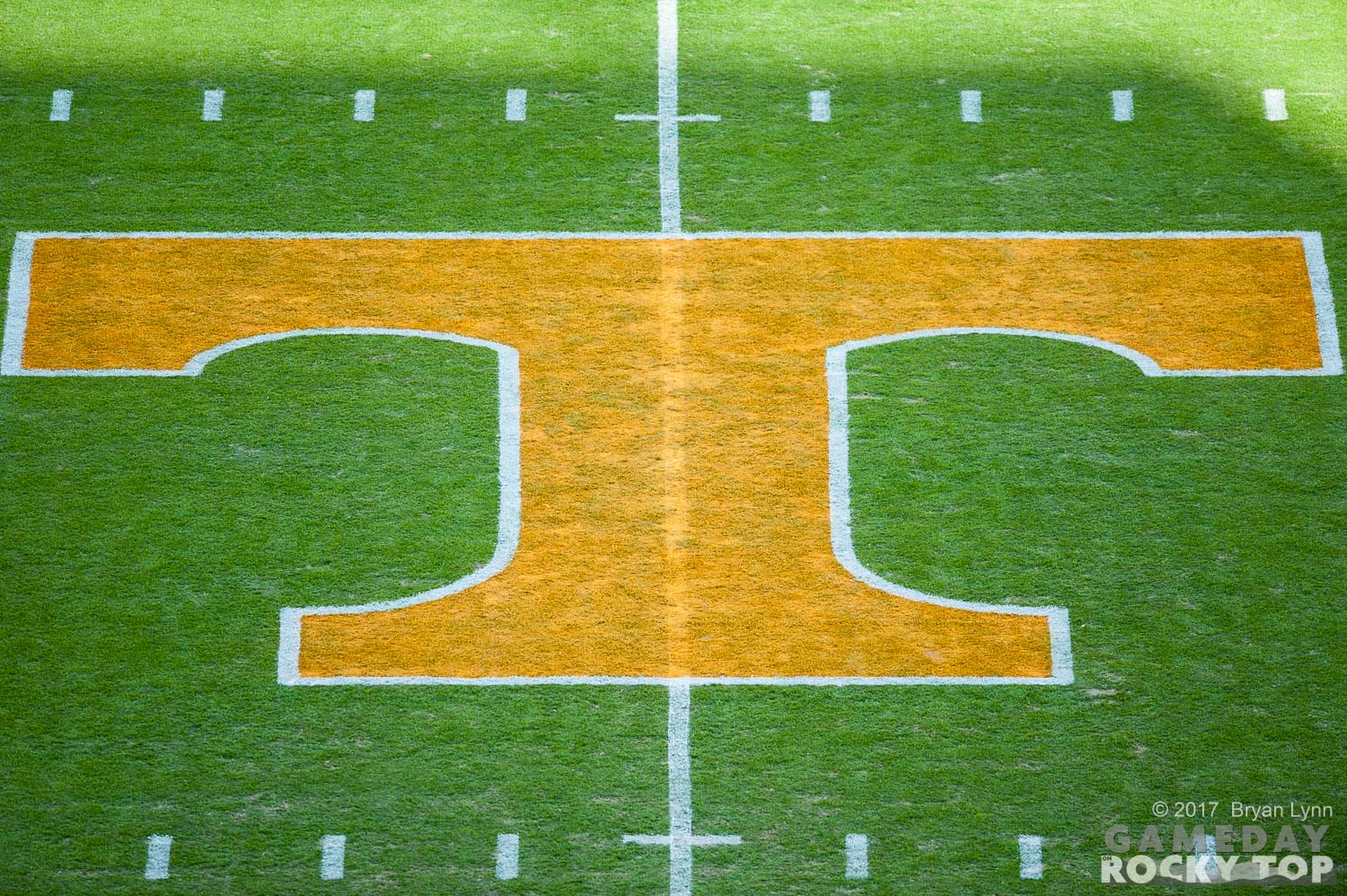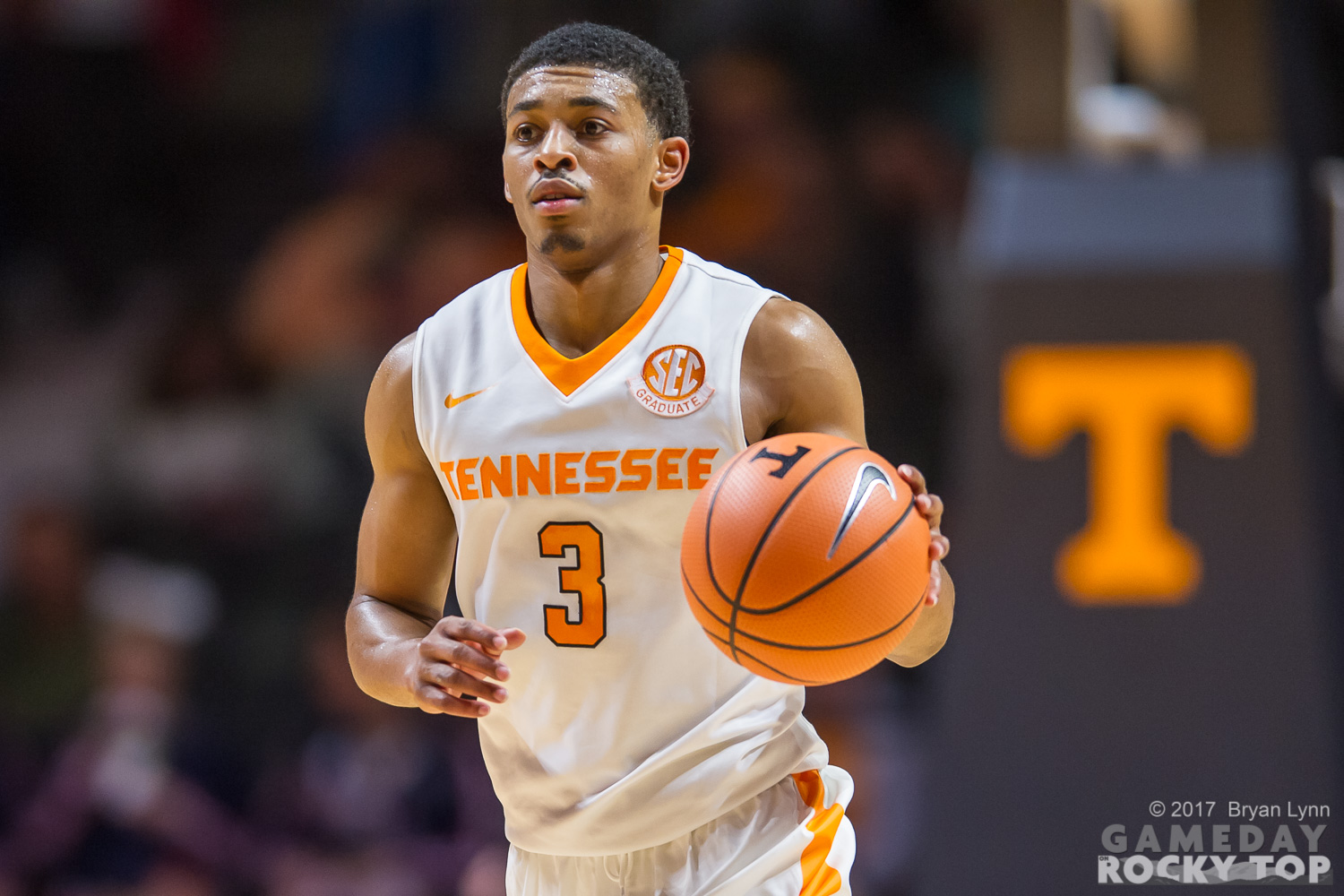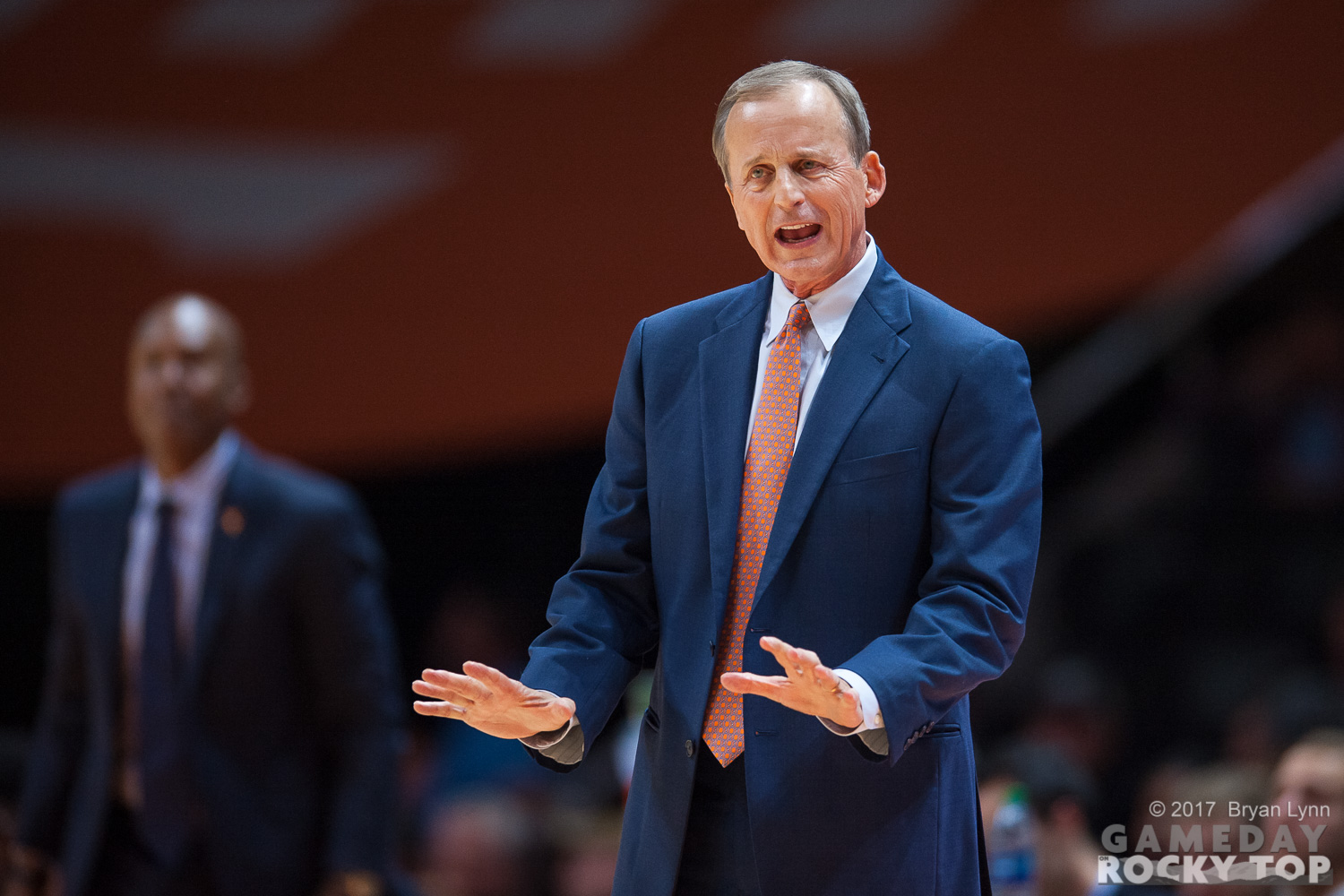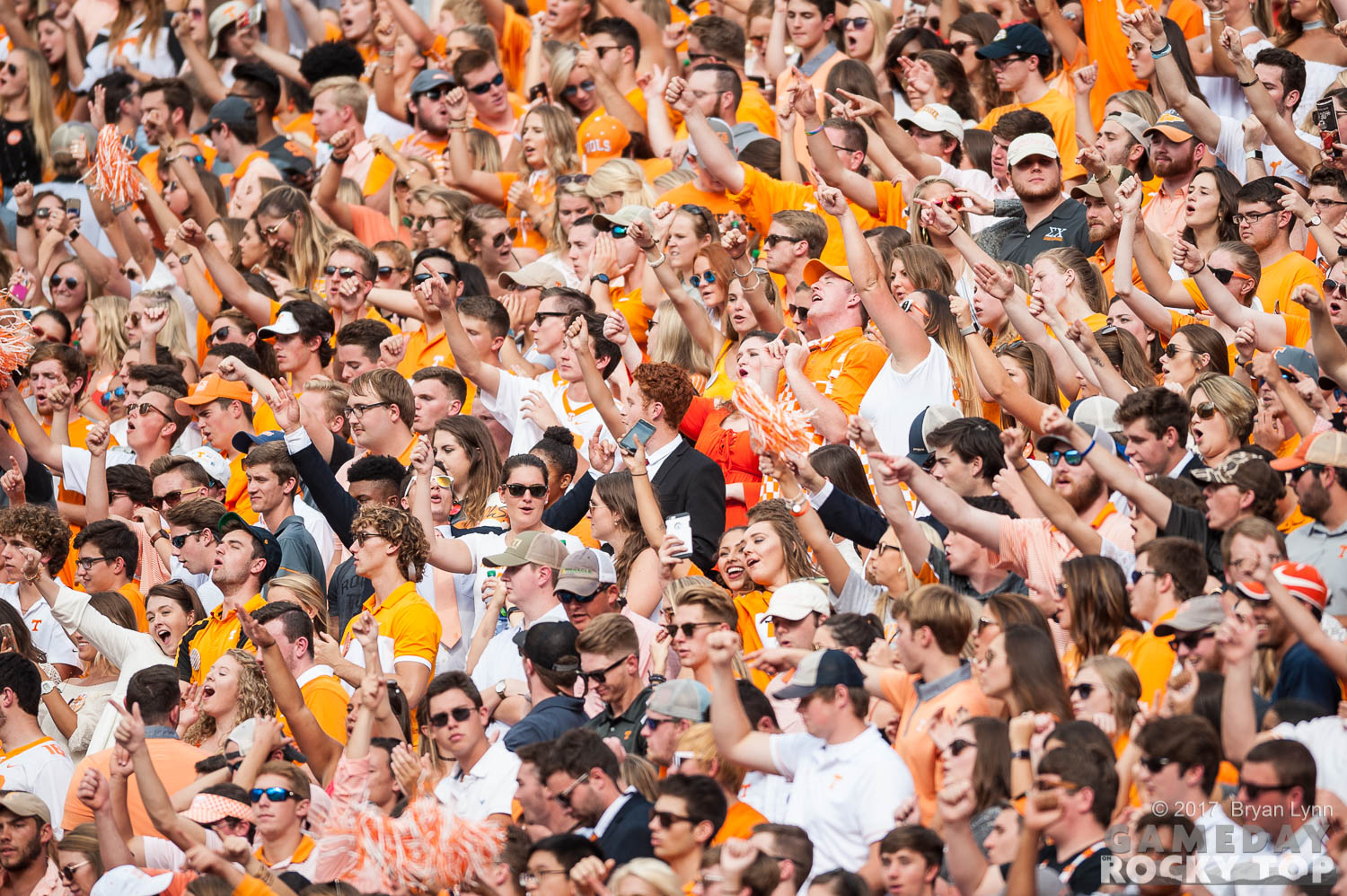When Tennessee’s search came up empty in Raleigh on Thursday morning, it seemed like two options were available. The Vols could press pause, take a breath after the events of an unprecedented week, and reset the board. Or the Vols could press on, try to make a hire as quickly as possible to change the narrative, and “settle” for a down-the-board unproven.
Thursday afternoon, John Currie instead went for door number three: let’s get Mike Leach, and let’s get weird. In their desperation, they turned to a man they didn’t fully understand. And what a grand experiment this would have been.
Then on Friday morning, weird and unprecedented collided head-on. And on Friday afternoon, at the end of our most insane week at the end of our most insane decade…on Friday afternoon, Tennessee found its way home.
To be clear, the house needs a lot of work. The brick-by-brick renovations looked good for a moment, but ultimately had to be torn down. But today, Phillip Fulmer is the athletic director, and Tennessee feels like home.
This has to be the culmination of the insanity.
We throw “rock bottom” around too often; at the end of the program’s first 4-8 season it’s easy to do. The Vols may continue to struggle on the field in the short-term, and no athletic program of this size and stature runs without drama. But if Tennessee is going to move forward in a meaningful way, Friday has to be the end of the madness.
Tennessee forced Fulmer out at the tail end of the 2008 season, one year after he won 10 games and his fifth division title. They replaced him with Lane Kiffin. Since then:
- Kiffin left in the middle of the night to take the Southern Cal job after just one season in January 2010.
- The Vols hired Derek Dooley fresh off a 4-8 season at Louisiana Tech.
- Bruce Pearl took the basketball program to its first Elite Eight in March 2010, then lost his job one year later, in part for lying about a photograph taken at a BBQ, for which he received a three-year show cause.
- Derek Dooley was fired after three years by Dave Hart, who replaced Mike Hamilton as athletic director. The Vols had Charlie Strong, then didn’t, and ended up hiring Butch Jones.
- Cuonzo Martin took the Vols to the Sweet 16 in 2014, then left for California after a low-ball offer from Dave Hart, who chose not to denounce an in-season petition for Bruce Pearl’s return.
- Hart hired Donnie Tyndall in April 2014. In November, the NCAA announced an investigation into his time at Southern Miss. He was fired after one season in Knoxville.
- Hart retired, in part due to the university’s involvement in a Title IX lawsuit alleging a culture of rape at Tennessee, as did chancellor Jimmy Cheek. Beverly Davenport replaced Cheek, then hired John Currie to replace Dave Hart.
- Butch Jones signed a pair of Top 10 recruiting classes in 2014 and 2015, but coached that talent to only a pair of 9-4 seasons in 2015 and 2016. Tennessee lost to Florida in inexplicable fashion in 2014, 2015, and 2017, failed to win the SEC East despite beating Florida and Georgia in 2016, and missed a chance to make a New Year’s Six bowl by losing to Vanderbilt. In 2017 the Vols fell apart and finished 4-8 for the first time in program history. Jones was fired.
And then, this week.
People smarter than me, including Phillip Fulmer, will tell you Tennessee has suffered on the field and court in large part because they suffered in the board room: the administration, the athletic department, and influential boosters playing too much tug-of-war. With Fulmer at the helm in the AD, Tennessee must start exerting the majority of its might toward the same goals. And Fulmer at the helm gives Tennessee a better chance to do so than we’ve seen in the last decade.
The long-term became more important this week.
When Tennessee lost to South Carolina and change was moving from possible to probable, this still seemed like a short-term fix. Tennessee’s senior class is small and there are still plenty of recruiting stars on the roster, unlike the turnover we saw from Kiffin-to-Dooley and Dooley-to-Butch. The Vols won nine games in 2015 and 2016, and were ranked for the first three weeks of this season. Hire the right coach and they might come in and sustain the level Butch Jones enjoyed, then hopefully level up.
Since then the Vols lost to Kentucky and were non-competitive in the second half with Missouri, LSU, and Vanderbilt. Two offensive linemen who would have been starters next year will no longer be on the team in 2018, plus a five-star legacy lineman opened up his recruitment. A legitimate conversation about whether to keep Butch Jones if he went 8-4 quickly turned into a 4-8 season, and an understanding that whoever was next would have multi-year work to do to get Tennessee back.
But as this week spiraled out of control, it became clear Tennessee’s long-term future was at stake. And it became clear this wasn’t a problem to be solved simply by making the right hire for the football team.
Friday morning, it felt like Tennessee football was more vulnerable than at any point in my lifetime. Even when the Vols hired Derek Dooley and you knew things would be bad for a couple of years, Tennessee was still just two seasons removed from an SEC East title and eight years removed from the doorstep of the BCS Championship Game. The program was relevant in a way that could (and did) survive Dooley, and survive a three-year recruiting failure from 2007-09.
But now, on the heels of 4-8 and with such instability in the athletic department, Tennessee’s long-term future was in jeopardy. At the end of a difficult decade, the perception quickly became that continuing to march to the beat of the same drum – one that thought Greg Schiano was the best option – would prevent Tennessee from getting healthy. And thus Currie is out, Fulmer is in, and the Haslams’ power seems diminished, with fan voices singing their approval.
An underrated variable in this whole equation is timing, something which finally worked in Tennessee’s favor in basketball when Rick Barnes became available as Donnie Tyndall was fired. What if Jim McElwain squeaks out those games against LSU and Texas A&M in October, and Florida doesn’t decide to make a change? Is Dan Mullen the coach in Knoxville on Sunday, and all of this mess is simply avoided?
This is the biggest question: is what happened this week a good thing for Tennessee long-term? If the problems on The Hill were indeed systemic, changing the balance of power at the top could be a win for Tennessee even as they take a loss in the short-term. That loss has already come in the national media, though their news cycles get continually shorter. That loss may also come on the field for a season or two. But is Tennessee better off today, with Phillip Fulmer at the helm, the fan voice registering, and everyone given a new chance to pull in the same direction? The answer could be yes even if the alternatives were Jeff Brohm, Mike Leach, or another coach we liked working under the previous system.
Faith returns, hope awaits, love abides
This week I have been more grateful than ever for the teams I love (the Celtics and, for a very long time, the Braves) that are well-run organizations. Growing up with the 80’s Celtics, the 90’s Braves, and the Majors/Fulmer Vols, it was easy to have faith in your team and assume they would make good decisions, giving them the very best chance to win.
At Tennessee, I think much of this faith endured among the fan base even when the first half of the last decade could be blamed on circumstance. When the Vols ended up with Butch Jones instead of Charlie Strong five years ago, faith wavered but love remained. Tennessee fans showed up for Teams 117-121.
But it became clear on Sunday fans did not believe in those with decision making power. This could have been a helpless feeling, and perhaps is in other situations it would be; what do you do if you’re, say, a Cleveland Browns fan?
But after a week of raised voices and real threats to stop showing up – in person and in the university’s bank account – a change sparked by a unified fan voice has given us a leader we can believe in. And once more, faith stirs.
We will see about hope. We noted in the middle of last week that despite a lack of faith in this administration, they still might land a coach to provide some degree of hope. Tennessee tried to rebound with Mike Gundy, then Jeff Brohm, then went to a coach who would have struggled in this department in Dave Doeren. Some of the names from previous hot boards might get a second call, others could move up the ladder, and perhaps Fulmer has a surprise or two up his sleeve. Hiring hope can still make a real difference in ticket sales and patience.
But at the end of a remarkable week and the start of a new chapter in Tennessee athletics, love remains. Love for Tennessee was behind the voices lifted in protest on Sunday, and love for Tennessee brought Fulmer to the big chair. The house needs work, and the family may still bicker about the best way to do it, as only family can. But love for Tennessee remains our unifying factor. We will need it, and we will need to continue to pull together in the same direction before we can make room for another trophy case.
But for now, it feels good to be home. On Friday night, there was finally a chance to rest in this search. My wife and I went out to dinner, and I grabbed an orange hat on my way out the door. It felt better on my head than it had in a long time.
Go Vols.
